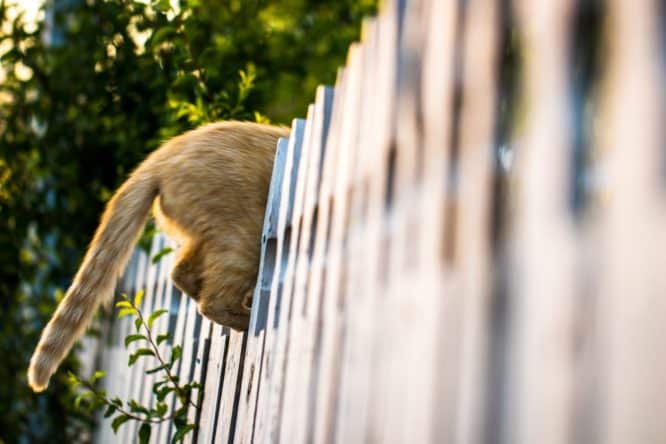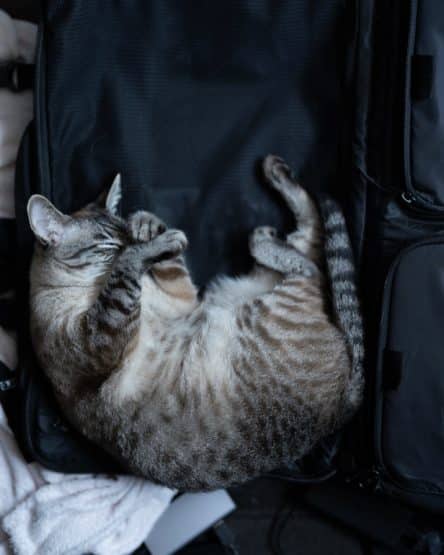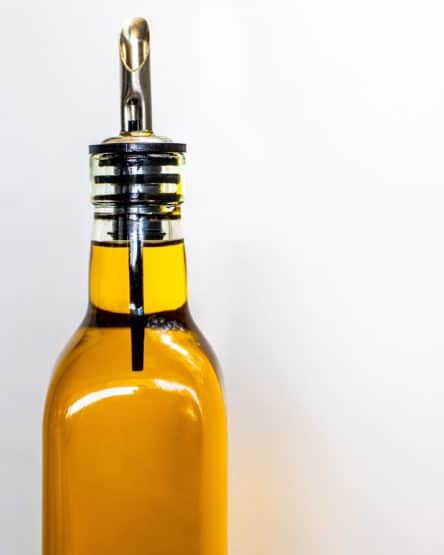If you’re here, you probably wonder, ‘Can I put Vaseline on my cat bum, or is this just a myth?’
Having Vaseline in your cupboard is a good idea, as this jelly-based product is good for many issues. It’s even said to help with cat constipation. Once you read this, you probably can’t stop asking yourself ‘Can I put Vaseline on my cat bum?’
If you want to know can you really use Vaseline for cat constipation, you’re on the right spot. We’ve explored this topic in great detail, so you can know is there truth to these stories.
Here’s what you need to know.
Can I Put Vaseline on My Cat Bum?

So, can you put Vaseline on a cat’s bottom, or is this just another stupid tale?
Believe it or not – yes, you can put Vaseline on your kitty’s bum! However, before you do this, there are several things you need to know.
What Is Vaseline, Exactly?
Before we go through the problem of ‘Can I put Vaseline on my cat bum?”, we should talk a bit about Vaseline.
For decades, people use this petroleum-based product for many purposes. Most notably, it does a great job of protecting your skin and lips.
While it is derived from petroleum, Vaseline is safe for both humans and animals. The petroleum in it is put through a triple purification process. This is done so it can become safe for human use. It’s very unlikely for Vaseline to cause clogging, irritations, aching, etc.
Not just that, but Vaseline is suitable for people with sensitive skin. This also means it’s safe to use on animal skin, such as cats’.
Another good side of Vaseline is that you can find it in many forms. You can buy it in pharmacies, even supermarkets! In average condition, Vaseline can last for a very long time. It has a decent shelf life of up to ten years without degrading. This means you can use a single tub of Vaseline for a decade!
Since Vaseline lacks pharmacologic properties, it can never get too dangerous, even if a lot of time passes. While it may lose its stickiness and moisturizing properties, it won’t become hazardous, no matter how old it is.
Still, it would be best to look at its expiration date before using it on your four-legged friend.
Is Vaseline Good for Cats?
The primary Vaseline’s function is to moisturize the skin by keeping the surface underneath it safe from drying out. This is why you can use it to provide quick relief to your cat experiencing many health issues.
For example, if your kitty has scratched or cracked pawns, you can use it to help her with pain. Just remember to disinfect and thoroughly clean the pawns before applying Vaseline. Otherwise, you might trap bacteria inside the skin.
Did you also know that if you give your furry friend Vaseline, cat hairball can pass easily and quickly? If your kitty eats it, it can help expel hairballs in around 48 hours, sometimes even less. The jelly will pick up any cat hairs and then they’ll exit the cat’s body together.
You can also put a Vaseline on cat wound, as long as it’s properly disinfected. It can help the wounds heal faster, and it will keep skin moisturized and safe.
Can Vaseline Treat Cat Constipation?

So, now you know that the answer to ‘Can I put Vaseline on my cat bum?’ is ‘Yes,’ you likely wonder how can you use it to help cat constipation.
As you know by now, Vaseline is excellent for keeping things moist and slippery. This means that when your kitty’s bottom is covered in Vaseline, she won’t have any trouble getting rid of hard or dry stools.
At the same time, Vaseline might help if your cat has an issue with matted fur on her bum, something that can commonly happen with long-haired felines.
Just remember to use it sparingly and to wipe her with soft towels to ensure no excess jelly is left behind. While Vaseline isn’t toxic, you still don’t want your pet eating it by accident.
Unless…
There is another method you can use for helping cats with constipation, and that is to mix Vaseline with cat food. A good idea would be to mix a little bit of Vaseline with the best cat food for sensitive stomach you have. This way, you’ll give her good-quality food while adding a remedy that might help her with her toilet habits.
Here’s how this works.
The molecules of jelly are too large, so they won’t get absorbed into the bloodstream. Instead, they’ll pass through a cat’s digestive system. While this is happening, Vaseline will cover the stools that it passes by.
This will give them moisture, which will, in return, keep them at least somewhat soft. In other words, the cat stools will remain slippery to a certain extent as it passes through the intestine. The moist will help with defecating, helping your cat relieve herself. If you’re lucky, this is all you need to help your cat get constipation relief.
Keep in mind that Vaseline is only good if the constipation is mild and short-lasting. This isn’t an ideal treatment for the long-term. If a cat doesn’t go to the toilet up to 24 hours after you gave her Vaseline, don’t give her anymore.
Instead, take her to the vet, especially if this constipation is long-lasting. Anything longer than a week could seriously harm her health.
A high-skilled professional would know what to do with severe constipation that last for several days. They will know how to set a proper diagnosis and what can they do to help a cat with digestive issues.
What Are the Alternatives?

If you aren’t fond of using Vaseline for cat constipation, there are several other methods you can try. We’ll list a few.
Pumpkin
Most of the time, the pumpkin will do wonders when it comes to constipation in cats. This is true for both dried and fresh pumpkins.
Pumpkin is rich in fiber. It will boost a digestive system, helping cats pass anything that’s been causing issues to their stomach.
Water
If a cat is well-hydrated, it will rarely face any stomach difficulties. However, when a cat eats mostly dried food, she can have issues passing her stools. If you suspect this is the issue, then helping your cat get hydrated might be the way to go.
Try giving her wet food for a while. Switching her diet this way might help with this issue. Another thing you might want to try is investing in a water fountain. Some cats prefer drinking moving water, so they won’t drink from their bowls, but will gladly use a fountain.
Psyllium
Psyllium is a good treatment for constipation in cats. It is the husk of Plantago seeds, and people use it as a natural remedy for all sorts of intestinal troubles.
For this to work, you should put around a quarter to a half teaspoon of Psyllium a day inside your kitty’s favorite food. In fact, you might even want to make this a part of her daily diet!
Just remember always to talk to your vet before you make any changes to your cat’s food.
Olive Oil
Olive oil is a great lubricant when the food won’t move inside your tummy. The same goes for cats.
Olive oil should be used in the same dosage as Psyllium, and it can also become a part of your kitty’s nutrition. It is great for minimizing any stomach issues.
Once again, consultations with your vet are essential.
Fish
If your kitty is otherwise healthy, try giving her a little bit of sardines or mackerel. They are a good food to keep intestines running smoothly.
Read Also: Can Cats Eat Goldfish Crackers
Bottom Line
Despite what some people might think, it’s perfectly safe to put Vaseline on a cat’s bum. This is a great way to help your constipated kitty, and it won’t harm them in any way. In fact, since Vaseline isn’t poisonous, it won’t harm your pet even if she licks it afterward.
Of course, Vaseline is only good as a treatment for short-term constipation. If your feline friend has been having these issues for a while, it would be wise to take her to the vet. They might rule out any more severe health issues.